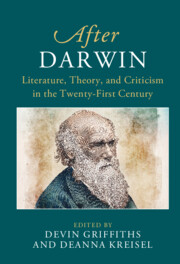Book contents
- After Darwin
- After Series
- After Darwin
- Copyright page
- Contents
- Figures
- Contributors
- Chapter 1 Introduction
- Part I Environments after Darwin
- Chapter 2 Darwin after Nature
- Chapter 3 Darwin and Animal Studies
- Chapter 4 Darwin’s Birdsong
- Chapter 5 Darwin and the Anthropocene
- Part II Differences after Darwin
- Part III Humanism after Darwin
- References
- Index
Chapter 4 - Darwin’s Birdsong
Sound Studies and Darwinian Aesthetics
from Part I - Environments after Darwin
Published online by Cambridge University Press: 01 December 2022
- After Darwin
- After Series
- After Darwin
- Copyright page
- Contents
- Figures
- Contributors
- Chapter 1 Introduction
- Part I Environments after Darwin
- Chapter 2 Darwin after Nature
- Chapter 3 Darwin and Animal Studies
- Chapter 4 Darwin’s Birdsong
- Chapter 5 Darwin and the Anthropocene
- Part II Differences after Darwin
- Part III Humanism after Darwin
- References
- Index
Summary
This chapter highlights passages from Darwin’s early writings that explore phonetics and phonology in the natural world, illuminating how sound lies at the heart of Darwin’s observational methodology. Darwin’s handwritten notes and early manuscripts, for example, demonstrate that his writing process relies upon experiencing the sonic texture and physiological dimension of nature. In order to communicate this sonic texture, Darwin uses elaborate metaphors and descriptions to recreate his own auditory experience within the mind’s eye (or ear) of his readers, in a process of auditory ekphrasis. Darwin’s attempts to represent birdsong, as well as his admittedly imperfect attempts to compare the sounds of a variety of animals, informed his understanding of the boundaries that differentiated species from each other. Ultimately, Darwin’s approaches to labeling sound at the intersection of different physiological, behavioral, and cultural registers exemplify the productive nature of a sound studies methodology in Victorian studies and beyond.
- Type
- Chapter
- Information
- After DarwinLiterature, Theory, and Criticism in the Twenty-First Century, pp. 45 - 56Publisher: Cambridge University PressPrint publication year: 2022

